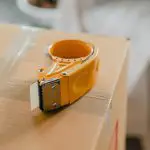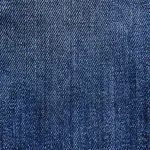If you want to master the art of attaching cardboard to fabric, there are 5 effective ways to do it.
You can sew the cardboard to the fabric, use fabric glue, stitch cardboard pockets onto the fabric, attach the cardboard with iron-on adhesive, or employ double-sided tape for attachment.
Each method has its own advantages, and by mastering all 5 techniques, you'll be well-equipped to handle any project that involves combining cardboard and fabric.
Key Takeaways
- Sewing techniques require proper needle size, thread tension, and stitch length for attaching cardboard to fabric.
- Fabric glue is an easy and quick alternative to sewing, providing a strong and durable bond.
- Stitching techniques, whether machine stitching or hand embroidery, offer effective methods for securing cardboard pockets.
- Iron-on adhesive and double-sided tape methods provide convenient options for attaching cardboard to fabric.
Sewing the Cardboard to Fabric
To sew the cardboard to fabric, follow these steps:
- Position the cardboard piece behind the fabric and align the edges.
- Ensure that the needle size is appropriate for the weight of the cardboard and fabric. A larger needle may be required for heavier materials.
- Set the thread tension to accommodate the thickness of the fabric and cardboard to prevent loose or tight stitches.
- Adjust the stitch length on your sewing machine to ensure that the needle penetrates the cardboard without causing it to tear or bend.
- It's essential to use a straight stitch and sew slowly to maintain control over the fabric and cardboard layers.
- When sewing, guide the fabric and cardboard evenly to prevent puckering or uneven stitching.
- Remember to reinforce the beginning and end of the seam to secure the layers together.
- Testing on a scrap piece first can help you determine the ideal settings for your specific materials.
With attention to needle size, thread tension, and stitch length, you can successfully sew cardboard to fabric with a professional finish.
Using Fabric Glue and Cardboard
When sewing the cardboard to fabric, you can also consider using fabric glue to securely attach the two materials together. Fabric glue provides a strong and durable bond, ensuring that the cardboard reinforcement stays in place and effectively enhances the fabric stiffness. Here's a helpful comparison of sewing and using fabric glue for attaching cardboard to fabric:
| Aspect | Sewing | Fabric Glue |
|---|---|---|
| Strength of bond | Strong | Strong |
| Ease of application | Requires sewing skills | Easy application |
| Flexibility | Limited by sewing lines | Flexible application |
| Time required | Longer | Quick drying time |
| Precision | Requires careful sewing | Can be applied precisely |
Using fabric glue for cardboard reinforcement offers a quick and efficient method for enhancing fabric stiffness. This approach is particularly useful for projects where sewing may be challenging or time-consuming. By utilizing fabric glue, you can achieve a strong and reliable bond between the cardboard and fabric, ensuring that the reinforcement effectively serves its purpose.
Stitching Cardboard Pockets Onto Fabric
Consider using a phrase preposition such as 'In addition to' to continue the discussion from the previous subtopic into the current subtopic.
When stitching cardboard pockets onto fabric, you can choose between machine stitching and hand embroidery. Machine stitching offers a quick and efficient way to attach cardboard pockets, providing a strong and durable hold. Set your sewing machine to a straight stitch and sew around the edges of the cardboard pocket, ensuring it's securely fastened to the fabric.
On the other hand, hand embroidery allows for intricate and decorative stitching, adding a personalized touch to the cardboard pockets. Using embroidery floss and a sharp needle, carefully stitch around the edges of the cardboard pocket, incorporating decorative patterns or designs as desired.
Both machine stitching and hand embroidery offer effective methods for securing cardboard pockets onto fabric, so consider the overall look and durability you wish to achieve when making your choice. These techniques provide versatile options for attaching cardboard to fabric, catering to different preferences and design requirements.
Attaching Cardboard With Iron-On Adhesive
For attaching cardboard with iron-on adhesive, you can achieve a secure and seamless bond between the cardboard and fabric by following these simple steps.
Iron-on adhesive techniques offer a convenient way to attach cardboard to fabric with a heat-activated bond. To begin, place the cardboard on a clean, flat surface with the fabric facing up. Then, position the iron-on adhesive sheet on top of the fabric, ensuring that it fully covers the area where the cardboard will be attached.
Use an iron set to the appropriate heat setting for the fabric, and press it firmly over the adhesive sheet for the recommended time. The heat activates the adhesive, creating a strong bond between the cardboard and fabric. Allow the assembly to cool before handling it.
Once cooled, you can trim any excess fabric and cardboard as needed. This method provides a durable and professional-looking attachment, making it ideal for various fabric and cardboard projects.
Employing Double-Sided Tape for Attachment
To attach cardboard to fabric, you can employ double-sided tape for a quick and easy bonding method. When using double-sided tape for attaching cardboard to fabric, follow these steps for effective application:
- Clean the Surfaces: Ensure that both the cardboard and fabric surfaces are clean and free from dust or debris. This will allow the tape to adhere properly, creating a strong bond.
- Apply the Tape: Carefully apply the double-sided tape to the edges or corners of the cardboard. Make sure to use enough tape to provide adequate support for the cardboard once it's attached to the fabric.
- Press Firmly: After placing the tape on the cardboard, press firmly to ensure it adheres securely. This step is crucial for the tape to create a durable bond between the cardboard and fabric.
- Attach to Fabric: Once the tape is applied, carefully position the cardboard onto the fabric and press firmly to secure the bond. The double-sided tape provides a quick and durable attachment method, making it an efficient choice for projects requiring a strong bond between cardboard and fabric.
Frequently Asked Questions
Can I Use Cardboard With a Glossy Finish When Sewing It to Fabric?
Yes, you can use cardboard with a glossy finish when sewing it to fabric. However, it's recommended to use fabric glue for delicate fabrics as it provides a secure attachment to the cardboard.
Is It Safe to Wash Fabric With Cardboard Pockets Attached in the Washing Machine?
When washing fabric with cardboard pockets attached in the washing machine, be cautious. The cardboard may not hold up well, potentially causing damage to both the fabric and the washing machine. Consider hand washing instead.
What Type of Fabric Glue Is Best for Attaching Cardboard to Delicate Fabrics?
For attaching cardboard to delicate fabrics, the best fabric glue is one that's specifically designed for delicate materials. Look for an adhesive that provides a strong bond without damaging the fabric.
Can I Use Iron-On Adhesive to Attach Cardboard to Stretchy or Synthetic Fabrics?
Yes, you can use iron-on adhesive to attach cardboard to stretchy or synthetic fabrics. It offers fabric compatibility and strong adhesive strength. Ensure the adhesive is heat-resistant and flexible to accommodate the fabric's stretchiness.
Will Double-Sided Tape Hold up in Extreme Temperatures or Humidity?
Double-sided tape can hold up in extreme temperatures and humidity, but for added durability, consider using an alternative adhesive with temperature resistance. Make sure to choose a tape specifically designed for challenging conditions.
- Class IIIA Kevlar Fabric: Standards for Body Armor - June 21, 2025
- China Carbon Kevlar Fabric Wholesale: Cost-Effective Sourcing - June 21, 2025
- Carbon Kevlar Fabric in Canada: Availability and Supplier Reviews - June 21, 2025







